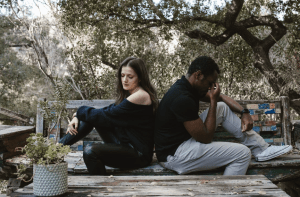Reframing Your Perspective
When we think about trauma, we often visualize it as a destructive force that shatters our core belief systems, leaving us feeling lost, broken, and unsure of our place in the world. Trauma disrupts our sense of safety and security, leaving us questioning everything we once held true. However, this article aims to explore how we can reframe our perspective after experiencing trauma and unearth change for the better in this process.
Understanding Trauma
Responses to trauma are as diverse as the individuals who endure them. Like a physical injury, trauma is an affliction that can disrupt our mental and emotional well-being. Just as a broken leg is an injury that requires time and care to heal, so too does the psyche when it has been wounded. It's important to remember that encountering trauma does not necessitate a plunge into disordered thinking or chronic psychological conditions.
Some individuals, for instance, may develop a condition known as post-traumatic stress disorder (PTSD) in response to traumatic experiences. PTSD is akin to a severe psychological wound, manifesting in recurring, distressing memories and emotional distress that persist long after the traumatic event has passed.
However, it's essential to understand that this is not the only pathway following a traumatic experience. Some people might undergo a transformative process, more akin to a ‘healing' than a ‘hurt.' This phenomenon is called post-traumatic growth (PTG). PTG represents the positive cognitive and emotional transformations that can transpire in response to traumatic experiences. Like the newfound mobility and strength one might develop after recovering from a broken leg, PTG involves burgeoning personal strength, cultivating deeper relationships, and fostering a greater appreciation for life. It embodies the adage “what doesn't kill you, makes you stronger,” illustrating that, while trauma is undeniably painful and challenging, it can also act as an impetus for significant personal development and growth.
The Role of the Brain
Amygdala and Prefrontal Cortex
Understanding the brain's role in trauma responses can significantly enhance our healing journey. Neuroscience studies show that different sections of the brain play significant roles in our trauma responses. The amygdala, the brain's alarm system, becomes activated during traumatic events, triggering the fight-or-flight response. Simultaneously, the prefrontal cortex, responsible for decision-making and emotional regulation, can become impaired, making it challenging to process and cope with the trauma effectively. Recognizing this connection is a crucial step in our healing journey.
Post-Traumatic Growth
Post-traumatic growth requires conscious exploration and understanding of our experiences. It involves examining the narrative we've built around the trauma and challenging any false negative or limiting beliefs that have surfaced. This can help us understand how our brains process trauma and work towards reframing our perspective to cultivate a healthier outlook on life.
Taking Care of Oneself
Prioritizing self-care is critical in this journey. This may involve seeking therapy or counseling, engaging in self-soothing activities, and setting boundaries to maintain a balance between caring for oneself and for others. Understanding the power-over dynamic that can arise from this imbalance is crucial, as well as recognizing the importance of prioritizing our needs and well-being.
The Power of Language
Reticular Activating System (RAS)
Language and the words we use can remarkably influence our healing journey. The Reticular Activating System (RAS), a network of neurons in our brain, pays close attention to repeated words or ideas. For instance, if we consistently reinforce positive self-affirmations, the RAS recognizes these as important and reinforces these positive beliefs in our thoughts and feelings.
Growth and Relationships
Healing from trauma doesn't just occur individually; it also occurs within our relationships. For instance, in a marriage, being a catalyst for growth and change can hugely enhance the relationship's strength and resilience.
Rebuilding Trust
Trust is undoubtedly the bedrock of any healthy relationship. However, trauma can heavily shake or even break this foundation when it enters the picture. Rebuilding trust after such an experience isn't just difficult; it's a delicate, often complex process that requires commitment, patience, and consistency from both individuals involved.
In the wake of trauma, feelings of vulnerability can run high. A person may feel exposed, questioning whether they can trust not only the people around them but also their own judgment. It's a critical time when reassurances can go a long way. Both parties must be committed to mending the emotional bridges that trauma has damaged. They need to demonstrate that commitment not just in words but also in actions that are consistent, predictable, and considerate.
Communication plays an instrumental role in this process. Both parties must feel safe enough to express their feelings, fears, and hopes without judgment or repercussion. This involves active listening, where each person takes the time to truly understand the other's perspective. Communicating empathetically also means validating each other's experiences and emotions. It's not about agreeing or finding a solution right away. Rather, it's about saying, “I hear you, I see you, and what you're feeling is important to me.”
Moreover, empathy is a powerful tool in rebuilding trust. It means sharing the emotional load and striving to understand and feel what the other person is experiencing. Empathy bridges the gap created by trauma, allowing for a connection at the deepest human level. It's a mutual understanding that you are in this together, ready to face whatever may come your way.
Being understanding is another crucial element in this journey. Post-trauma reactions can be varied and complex. There may be good days, and there might be bad days. Understanding this variability and accepting it as part of the healing process helps in creating a supportive and non-judgmental space that's conducive to rebuilding trust.
Patience, too, is vital. Rebuilding trust doesn't happen overnight. It's a process that takes time, sometimes a considerable amount of it. The healing timeline is sometimes linear; there may be setbacks along the way. However, it's essential to remember that these setbacks don't mean failure. They're just part of the journey.
Managing Expectations
Expectations, when appropriately managed, can serve as guides in our relationships, particularly when navigating the intricate journey of healing from trauma. Unrealistic or unspoken expectations can complicate this journey, breeding misunderstanding and tension. Hence, effectively communicating and managing these expectations becomes paramount in the aftermath of trauma. Open dialogue allows individuals to convey their needs and desires transparently, setting the stage for mutual understanding and empathy. Comprehending the other person's viewpoint allows for a deeper appreciation of their expectations and why they matter, especially in the context of trauma recovery.
Creating a shared vision for the relationship post-trauma is a collaborative endeavor that requires alignment of expectations and mutual compromise. Recognizing that both partners' expectations carry equal weight can foster a unified roadmap toward healing, fortifying the relationship bond. However, the process doesn't end there. As people grow and their needs evolve, especially through the healing process, it becomes essential to revisit these expectations periodically. Continuous discussions ensure they remain aligned and pertinent, promoting a stronger, more understanding, and compassionate relationship in the wake of trauma.
Take Aways
In conclusion, while trauma has the potential to counter previously held beliefs and shatter our sense of self, we can reframe our perspective and find positive transformation in the aftermath of trauma. Understanding the neuroscience behind trauma, taking care of ourselves, and being catalysts for growth and change in our relationships are all essential aspects of this journey. By embracing trust and managing expectations, we can navigate the path of post-traumatic growth with resilience and grace, creating a brighter future.
FAQs
- What is post-traumatic growth? Post-traumatic growth refers to the positive mental and emotional changes that can occur following trauma.
- How can trauma affect the brain? During trauma, the amygdala triggers the fight-or-flight response, while the prefrontal cortex, responsible for decision-making and emotional regulation, may become impaired. Injuries can heal and repair. Be patient with yourself and others and pursue support.
- How can language influence healing from trauma? Repeated positive affirmations can influence the Reticular Activating System (RAS) in our brain, reinforcing positive beliefs in our thoughts and feelings. Negative self-talk does the opposite.
- How can we rebuild trust in a relationship after trauma? To regain trust in a relationship, it is essential to have honest and empathetic communication between both partners. It is crucial that words and actions are consistent with each other, and grace is applied.
- How can we manage expectations in a relationship after experiencing trauma? Managing expectations involves open discussion, collaboration, and alignment of expectations between both partners to create a shared vision for the relationship. Begin with the end in mind.



